缩放算法优化步骤详解
添加链接描述
背景
假设数据存放在在unsigned char* m_pData 里面,宽和高分别是:m_nDataWidth m_nDataHeight
给定缩放比例:fXZoom fYZoom,返回缩放后的unsigned char* dataZoom
这里采用最简单的缩放算法即:
根据比例计算原图和缩放后图坐标的对应关系:缩放后图坐标*缩放比例 = 原图坐标
原始代码 未优化
#pragma once
class zoomBlock
{
public:zoomBlock() {};~zoomBlock();void zoomDataSSE128(unsigned char* dataZoom, float fXZoom, float fYZoom);void zoomData(unsigned char* dataZoom, float fXZoom, float fYZoom);void test(float fXZoom =0.5, float fYZoom=0.5);void init(int DataWidth, int DataHeight);
private:void computeSrcValues(int* srcValues, size_t size, float zoom, int dataSize);private:unsigned char* m_pData = nullptr;float m_fXZoom = 1 ;//x轴缩放比例 m_nXZoom=1时 不缩放float m_fYZoom = 1 ;//y轴缩放比例int m_nDataWidth = 0;int m_nDataHeight = 0;
};#include "zoomBlock.h"
#include <stdio.h>
#include <iostream>
#include<iomanip>
#define SAFE_DELETE_ARRAY(p) { if( (p) != NULL ) delete[] (p); (p) = NULL; }zoomBlock::~zoomBlock()
{SAFE_DELETE_ARRAY(m_pData);
}
void zoomBlock::init(int DataWidth, int DataHeight)
{m_nDataWidth = DataWidth;m_nDataHeight = DataHeight;m_pData = new unsigned char[m_nDataWidth* m_nDataHeight];for (int i = 0; i < m_nDataWidth * m_nDataHeight; ++i){m_pData[i] = static_cast<unsigned char>(i); // Replace this with your data initialization logic}
}void zoomBlock::zoomData(unsigned char* dataZoom, float fXZoom, float fYZoom)
{int nZoomDataWidth = fXZoom * m_nDataWidth;int nZoomDataHeight = fYZoom * m_nDataHeight;for (size_t row = 0; row < nZoomDataHeight; row++){for (size_t column = 0; column < nZoomDataWidth; column ++){//1int srcx = std::min(int(row / fYZoom), m_nDataHeight - 1);int srcy = std::min(int(column / fXZoom), m_nDataWidth - 1);//2int srcPos = srcx * m_nDataHeight + srcy;int desPos = row * nZoomDataHeight + column;dataZoom[desPos] = m_pData[srcPos];}}
}void zoomBlock::test(float fXZoom, float fYZoom)
{init(8,8);std::cout << "Values in m_pData:" << std::endl;for (int i = 0; i < m_nDataWidth * m_nDataHeight; ++i){std::cout << std::setw(4) << static_cast<int>(m_pData[i]) << " ";if ((i + 1) % m_nDataWidth == 0) { // Adjust the value based on your datastd::cout << std::endl;}}unsigned char* dataZoom = new unsigned char[fXZoom * m_nDataWidth * fYZoom * m_nDataHeight];zoomData(dataZoom, fXZoom, fYZoom);// Print or inspect the values in m_dataZoomint nZoomDataWidth = fXZoom * m_nDataWidth;int nZoomDataHeight = fYZoom * m_nDataHeight;std::cout << "Values in m_dataZoom:" << std::endl;for (int i = 0; i < nZoomDataHeight * nZoomDataWidth; ++i){std::cout << std::setw(4)<< static_cast<int>(dataZoom[i]) << " ";if ((i + 1) % nZoomDataWidth == 0) { // Adjust the value based on your datastd::cout << std::endl;}}SAFE_DELETE_ARRAY(dataZoom);}
测试代码
int main()
{zoomBlock zoomBlocktest;zoomBlocktest.test(1.5,1.5);return 0;
}
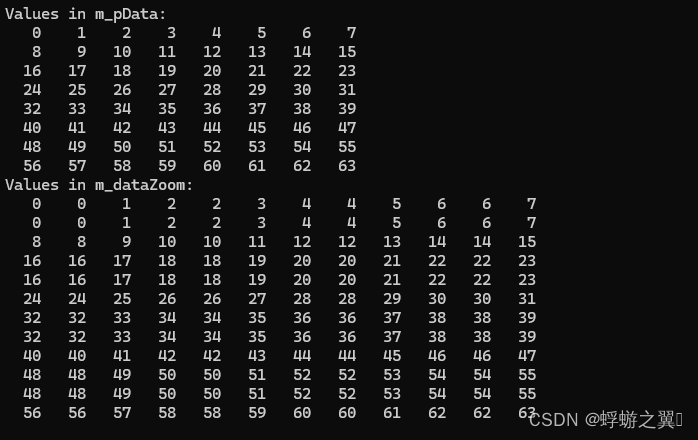
其中函数
·void zoomBlock::zoomData(unsigned char* dataZoom, float fXZoom, float fYZoom)·
没有使用任何加速优化,现在来分析它。
sse128
我们知道sse128可以一次性处理4个int类型,所以我们把最后一层for循环改成,4个坐标的算法,不满4个的单独计算
void zoomBlock::zoomDataSSE128(unsigned char* dataZoom, float fXZoom, float fYZoom)
{int nZoomDataWidth = fXZoom * m_nDataWidth;int nZoomDataHeight = fYZoom * m_nDataHeight;for (size_t row = 0; row < nZoomDataHeight; row++){int remian = nZoomDataWidth % 4;for (size_t column = 0; column < nZoomDataWidth - remian; column += 4){//第一个坐标int srcx = std::min(int(row / fYZoom), m_nDataHeight - 1);int srcy = std::min(int(column / fXZoom), m_nDataWidth - 1);int srcPos = srcx * m_nDataHeight + srcy;int desPos = row * nZoomDataHeight + column;dataZoom[desPos] = m_pData[srcPos];//第二个坐标int srcx1 = std::min(int((row+1) / fYZoom), m_nDataHeight - 1);int srcy1 = std::min(int((column+1) / fXZoom), m_nDataWidth - 1);int srcPos1 = srcx1 * m_nDataHeight + srcy1;int desPos1 = (row+1) * nZoomDataHeight + column+1;dataZoom[desPos1] = m_pData[srcPos1];//第3个坐标// 。。。//第4个坐标// 。。。}// Process the remaining elements (if any) without SSEfor (size_t column = nZoomDataWidth - remian; column < nZoomDataWidth; column++){int srcx = std::min(int(row / fYZoom), m_nDataHeight - 1);int srcy = std::min(int(column / fXZoom), m_nDataWidth - 1);int srcPos = srcx * m_nDataHeight + srcy;int desPos = row * nZoomDataHeight + column;dataZoom[desPos] = m_pData[srcPos];}}
}
上面 一次处理四个坐标的代码要改成sse的代码
在最里层的循环里面,每次都要计算 row / fYZoom 和 column / fXZoom,这个实际上可以挪出for循环,计算一次存到数组里
数据坐标desPos和srcPos ,必须放在最内存的循环里
所以我们用calculateSrcIndex函数单独处理 row / fYZoom 和 column / fXZoom,希望达到如下效果:
void calculateSrcIndex(int* srcValues, int size, float zoom,int max)
{for (int i = 0; i < size; i++){srcValues[i] = std::min(int(i/zoom),max);}
}
改成sse:
void calculateSrcIndex(int* srcValues, int size, float zoom,int max)
{__m128i mmIndex, mmSrcValue, mmMax;mmMax = _mm_set1_epi32(max);float zoomReciprocal = 1.0f / zoom;int remian = size % 4;for (size_t i = 0; i < size - remian; i += 4){mmIndex = _mm_set_epi32(i + 3, i + 2, i + 1, i);mmSrcValue = _mm_cvtps_epi32(_mm_mul_ps(_mm_cvtepi32_ps(mmIndex), _mm_set1_ps(zoomReciprocal)));// Ensure srcValues are within the valid range [0, max]mmSrcValue = _mm_min_epi32(mmSrcValue, mmMax);// Store the result to the srcValues array_mm_storeu_si128(reinterpret_cast<__m128i*>(&srcValues[i]), mmSrcValue);}// Process the remaining elements (if any) without SSEfor (size_t i = size - remian; i < size; i++){srcValues[i] = std::min(int(i / zoom), max);}
}
解释:
这里主要处理int型数据,为了使用sse加速,要使用__m128i类型来存储4个int
加载int到__m128i:
-
__m128i _mm_set1_epi32(int i);
这个指令是使用1个i,来设置__m128i,将__m128i看做4个32位的部分,则每个部分都被赋为i; -
__m128i _mm_set_epi32(int i3, int i2,int i1, int i0);
说明:使用4个int(32bits)变量来设置__m128i变量;
返回值:如果返回值__m128i,分为r0,r1,r2,r3返回值规则如下:
r0 := i0
r1 := i1
r2 := i2
r3 := i3
- __m128i _mm_cvtps_epi32 (__m128 a)
Converts packed 32-bit integers in a to packed single-precision (32-bit) floating-point elements.
加载float到__m128
- __m128 _mm_set1_ps(float w)
对应于_mm_load1_ps的功能,不需要字节对齐,需要多条指令。(r0 = r1 = r2 = r3 = w) - __m128 _mm_cvtepi32_ps (__m128i a)
Converts packed 32-bit integers in a to packed single-precision (32-bit) floating-point elements.
float乘法
__m128 dst = _mm_mul_ps (__m128 a, __m128 b)
将a, b中的32位浮点数相乘,结果打包给dst
取最小值
__m128i _mm_min_epi32 (__m128i a, __m128i b)
Compare packed signed 32-bit integers in a and b, and store packed minimum values in dst.
Operation
FOR j := 0 to 3
i := j*32
dst[i+31:i] := MIN(a[i+31:i], b[i+31:i])
ENDFOR
所以代码修改为
int* srcX = new int[nZoomDataHeight];int* srcY = new int[nZoomDataWidth];calculateSrcIndex(srcX, nZoomDataHeight, fXZoom , m_nDataHeight - 1);calculateSrcIndex(srcY, nZoomDataWidth, fYZoom, m_nDataWidth - 1);for (size_t row = 0; row < nZoomDataHeight; row++){int remian = nZoomDataWidth % 4;for (size_t column = 0; column < nZoomDataWidth - remian; column += 4){//第一个坐标int srcPos = srcX[row] * m_nDataHeight + srcY[column];int desPos = row * nZoomDataHeight + column;dataZoom[desPos] = m_pData[srcPos];...}}
然后把坐标的计算转为sse
void zoomBlock::zoomDataSSE128(unsigned char* dataZoom, float fXZoom, float fYZoom)
{int nZoomDataWidth = fXZoom * m_nDataWidth;int nZoomDataHeight = fYZoom * m_nDataHeight;int* srcX = new int[nZoomDataWidth];int* srcY = new int[nZoomDataHeight];calculateSrcIndex(srcX, nZoomDataWidth, fXZoom, m_nDataWidth - 1);calculateSrcIndex(srcY, nZoomDataHeight, fYZoom, m_nDataHeight - 1);for (size_t y = 0; y < nZoomDataHeight; y++){int remian = nZoomDataWidth % 4;for (size_t x = 0; x < nZoomDataWidth - remian; x += 4){__m128i mmsrcX = _mm_set_epi32(srcX[x + 3], srcX[x + 2], srcX[x+1], srcX[x]);__m128i srcPosIndices = _mm_add_epi32(_mm_set1_epi32(srcY[y] * m_nDataWidth),mmsrcX);__m128i desPosIndices = _mm_add_epi32(_mm_set1_epi32(y * nZoomDataWidth),_mm_set_epi32(x + 3, x + 2, x + 1, x));dataZoom[desPosIndices.m128i_i32[0]] = m_pData[srcPosIndices.m128i_i32[0]];dataZoom[desPosIndices.m128i_i32[1]] = m_pData[srcPosIndices.m128i_i32[1]];dataZoom[desPosIndices.m128i_i32[2]] = m_pData[srcPosIndices.m128i_i32[2]];dataZoom[desPosIndices.m128i_i32[3]] = m_pData[srcPosIndices.m128i_i32[3]];/*cout << "srcPosIndices: " << srcPosIndices.m128i_i32[0] << " , desPosIndices : " << desPosIndices.m128i_i32[0] << endl;cout << "srcPosIndices: " << srcPosIndices.m128i_i32[1] << " , desPosIndices : " << desPosIndices.m128i_i32[1] << endl;cout << "srcPosIndices: " << srcPosIndices.m128i_i32[2] << " , desPosIndices : " << desPosIndices.m128i_i32[2] << endl;cout << "srcPosIndices: " << srcPosIndices.m128i_i32[3] << " , desPosIndices : " << desPosIndices.m128i_i32[3] << endl;*/}// Process the remaining elements (if any) without SSEfor (size_t x = nZoomDataWidth - remian; x < nZoomDataWidth; x++){int srcy = std::min(int(y / fYZoom), m_nDataHeight - 1);int srcx = std::min(int(x / fXZoom), m_nDataWidth - 1);int srcPos = srcy * m_nDataHeight + srcx;int desPos = y * nZoomDataHeight + x;dataZoom[desPos] = m_pData[srcPos];}}delete[] srcX;delete[] srcY;
}
完整的代码
#pragma once
class zoomBlock
{
public:zoomBlock() {};~zoomBlock();void zoomDataSSE128(unsigned char* dataZoom, float fXZoom, float fYZoom);void zoomData(unsigned char* dataZoom, float fXZoom, float fYZoom);void test(float fXZoom =0.5, float fYZoom=0.5);void init(int DataWidth, int DataHeight);
private:inline void calculateSrcIndex(int* srcValues, int size, float zoom, int max);private:unsigned char* m_pData = nullptr;float m_fXZoom = 1 ;//x轴缩放比例 m_nXZoom=1时 不缩放float m_fYZoom = 1 ;//y轴缩放比例int m_nDataWidth = 0;int m_nDataHeight = 0;
};#include "zoomBlock.h"
#include <stdio.h>
#include <iostream>
#include<iomanip>
#include<immintrin.h>
using namespace std;
#define SAFE_DELETE_ARRAY(p) { if( (p) != NULL ) delete[] (p); (p) = NULL; }zoomBlock::~zoomBlock()
{SAFE_DELETE_ARRAY(m_pData);
}
void zoomBlock::init(int DataWidth, int DataHeight)
{m_nDataWidth = DataWidth;m_nDataHeight = DataHeight;m_pData = new unsigned char[m_nDataWidth* m_nDataHeight];for (int i = 0; i < m_nDataWidth * m_nDataHeight; ++i){m_pData[i] = static_cast<unsigned char>(i); // Replace this with your data initialization logic}
}void zoomBlock::zoomData(unsigned char* dataZoom, float fXZoom, float fYZoom)
{int nZoomDataWidth = fXZoom * m_nDataWidth;int nZoomDataHeight = fYZoom * m_nDataHeight;for (size_t y = 0; y < nZoomDataHeight; y++){for (size_t x = 0; x < nZoomDataWidth; x ++){//1int srcy = std::min(int(y / fYZoom), m_nDataHeight - 1);int srcx = std::min(int(x / fXZoom), m_nDataWidth - 1);//2int srcPos = srcy * m_nDataWidth + srcx;int desPos = y * nZoomDataWidth + x;dataZoom[desPos] = m_pData[srcPos];}}
}inline void zoomBlock::calculateSrcIndex(int* srcValues, int size, float zoom,int max)
{__m128i mmIndex, mmSrcValue, mmMax;mmMax = _mm_set1_epi32(max);float zoomReciprocal = 1.0f / zoom;int remian = size % 4;for (size_t i = 0; i < size - remian; i += 4){mmIndex = _mm_set_epi32(i + 3, i + 2, i + 1, i);mmSrcValue = _mm_cvttps_epi32(_mm_mul_ps(_mm_cvtepi32_ps(mmIndex), _mm_set1_ps(zoomReciprocal)));// Ensure srcValues are within the valid range [0, max]mmSrcValue = _mm_min_epi32(mmSrcValue, mmMax);// Store the result to the srcValues array_mm_storeu_si128(reinterpret_cast<__m128i*>(&srcValues[i]), mmSrcValue);}// Process the remaining elements (if any) without SSEfor (size_t i = size - remian; i < size; i++){srcValues[i] = std::min(int(i / zoom), max);}
}void zoomBlock::zoomDataSSE128(unsigned char* dataZoom, float fXZoom, float fYZoom)
{int nZoomDataWidth = fXZoom * m_nDataWidth;int nZoomDataHeight = fYZoom * m_nDataHeight;int* srcX = new int[nZoomDataWidth];int* srcY = new int[nZoomDataHeight];calculateSrcIndex(srcX, nZoomDataWidth, fXZoom, m_nDataWidth - 1);calculateSrcIndex(srcY, nZoomDataHeight, fYZoom, m_nDataHeight - 1);for (size_t y = 0; y < nZoomDataHeight; y++){int remian = nZoomDataWidth % 4;for (size_t x = 0; x < nZoomDataWidth - remian; x += 4){/*int srcPos = srcx * m_nDataHeight + srcy;int desPos = row * nZoomDataHeight + column;*///dataZoom[desPos] = m_pData[srcPos];//__m128i mmsrcY = _mm_loadu_si128((__m128i*)(srcY));__m128i mmsrcX = _mm_set_epi32(srcX[x + 3], srcX[x + 2], srcX[x+1], srcX[x]);__m128i srcPosIndices = _mm_add_epi32(_mm_set1_epi32(srcY[y] * m_nDataWidth),mmsrcX);__m128i desPosIndices = _mm_add_epi32(_mm_set1_epi32(y * nZoomDataWidth),_mm_set_epi32(x + 3, x + 2, x + 1, x));dataZoom[desPosIndices.m128i_i32[0]] = m_pData[srcPosIndices.m128i_i32[0]];dataZoom[desPosIndices.m128i_i32[1]] = m_pData[srcPosIndices.m128i_i32[1]];dataZoom[desPosIndices.m128i_i32[2]] = m_pData[srcPosIndices.m128i_i32[2]];dataZoom[desPosIndices.m128i_i32[3]] = m_pData[srcPosIndices.m128i_i32[3]];/*cout << "srcPosIndices: " << srcPosIndices.m128i_i32[0] << " , desPosIndices : " << desPosIndices.m128i_i32[0] << endl;cout << "srcPosIndices: " << srcPosIndices.m128i_i32[1] << " , desPosIndices : " << desPosIndices.m128i_i32[1] << endl;cout << "srcPosIndices: " << srcPosIndices.m128i_i32[2] << " , desPosIndices : " << desPosIndices.m128i_i32[2] << endl;cout << "srcPosIndices: " << srcPosIndices.m128i_i32[3] << " , desPosIndices : " << desPosIndices.m128i_i32[3] << endl;*/}// Process the remaining elements (if any) without SSEfor (size_t x = nZoomDataWidth - remian; x < nZoomDataWidth; x++){int srcy = std::min(int(y / fYZoom), m_nDataHeight - 1);int srcx = std::min(int(x / fXZoom), m_nDataWidth - 1);int srcPos = srcy * m_nDataHeight + srcx;int desPos = y * nZoomDataHeight + x;dataZoom[desPos] = m_pData[srcPos];}}delete[] srcX;delete[] srcY;
}void zoomBlock::test(float fXZoom, float fYZoom)
{init(8,4);std::cout << "Values in m_pData:" << std::endl;for (int i = 0; i < m_nDataWidth * m_nDataHeight; ++i){std::cout << std::setw(4) << static_cast<int>(m_pData[i]) << " ";if ((i + 1) % m_nDataWidth == 0) { // Adjust the value based on your datastd::cout << std::endl;}}int nZoomDataWidth = fXZoom * m_nDataWidth;int nZoomDataHeight = fYZoom * m_nDataHeight;unsigned char* dataZoom = new unsigned char[nZoomDataWidth * nZoomDataHeight];zoomDataSSE128(dataZoom, fXZoom, fYZoom);//zoomData(dataZoom, fXZoom, fYZoom);// Print or inspect the values in m_dataZoomstd::cout << "Values in m_dataZoom:" << std::endl;for (int i = 0; i < nZoomDataHeight * nZoomDataWidth; ++i){std::cout << std::setw(4)<< static_cast<int>(dataZoom[i]) << " ";if ((i + 1) % nZoomDataWidth == 0) { // Adjust the value based on your datastd::cout << std::endl;}}SAFE_DELETE_ARRAY(dataZoom);}int main()
{zoomBlock zoomBlocktest;zoomBlocktest.test(2,1);return 0;
}

AVX 256
inline void zoomBlock::calculateSrcIndex256(int* srcValues, int size, float zoom, int max)
{__m256i ymmIndex, ymmSrcValue, ymmMax;ymmMax = _mm256_set1_epi32(max);float zoomReciprocal = 1.0f / zoom;int remian = size % 8;for (size_t i = 0; i < size - remian; i += 8){ymmIndex = _mm256_set_epi32(i + 7, i + 6, i + 5, i + 4, i + 3, i + 2, i + 1, i);ymmSrcValue = _mm256_cvtps_epi32(_mm256_mul_ps(_mm256_cvtepi32_ps(ymmIndex), _mm256_set1_ps(zoomReciprocal)));// Ensure srcValues are within the valid range [0, max]ymmSrcValue = _mm256_min_epi32(ymmSrcValue, ymmMax);// Store the result to the srcValues array_mm256_storeu_si256(reinterpret_cast<__m256i*>(&srcValues[i]), ymmSrcValue);}// Process the remaining elements (if any) without AVX2for (size_t i = size - remian; i < size; i++){srcValues[i] = std::min(int(i / zoom), max);}
}
void zoomBlock::zoomDataAVX2(unsigned char* dataZoom, float fXZoom, float fYZoom)
{int nZoomDataWidth = fXZoom * m_nDataWidth;int nZoomDataHeight = fYZoom * m_nDataHeight;int* srcX = new int[nZoomDataWidth];int* srcY = new int[nZoomDataHeight];calculateSrcIndex(srcX, nZoomDataWidth, fXZoom, m_nDataWidth - 1);calculateSrcIndex(srcY, nZoomDataHeight, fYZoom, m_nDataHeight - 1);for (size_t y = 0; y < nZoomDataHeight; y++){int remian = nZoomDataWidth % 8;for (size_t x = 0; x < nZoomDataWidth - remian; x += 8){__m256i ymmSrcX = _mm256_set_epi32(srcX[x + 7], srcX[x + 6], srcX[x + 5], srcX[x + 4],srcX[x + 3], srcX[x + 2], srcX[x + 1], srcX[x]);__m256i srcPosIndices = _mm256_add_epi32(_mm256_set1_epi32(srcY[y] * m_nDataWidth),ymmSrcX);__m256i desPosIndices = _mm256_add_epi32(_mm256_set1_epi32(y * nZoomDataWidth),_mm256_set_epi32(x + 7, x + 6, x + 5, x + 4, x + 3, x + 2, x + 1, x));dataZoom[desPosIndices.m256i_i32[0]] = m_pData[srcPosIndices.m256i_i32[0]];dataZoom[desPosIndices.m256i_i32[1]] = m_pData[srcPosIndices.m256i_i32[1]];dataZoom[desPosIndices.m256i_i32[2]] = m_pData[srcPosIndices.m256i_i32[2]];dataZoom[desPosIndices.m256i_i32[3]] = m_pData[srcPosIndices.m256i_i32[3]];dataZoom[desPosIndices.m256i_i32[4]] = m_pData[srcPosIndices.m256i_i32[4]];dataZoom[desPosIndices.m256i_i32[5]] = m_pData[srcPosIndices.m256i_i32[5]];dataZoom[desPosIndices.m256i_i32[6]] = m_pData[srcPosIndices.m256i_i32[6]];dataZoom[desPosIndices.m256i_i32[7]] = m_pData[srcPosIndices.m256i_i32[7]];}// Process the remaining elements (if any) without AVX2for (size_t x = nZoomDataWidth - remian; x < nZoomDataWidth; x++){int srcy = std::min(int(y / fYZoom), m_nDataHeight - 1);int srcx = std::min(int(x / fXZoom), m_nDataWidth - 1);int srcPos = srcy * m_nDataWidth + srcx;int desPos = y * nZoomDataWidth + x;dataZoom[desPos] = m_pData[srcPos];}}delete[] srcX;delete[] srcY;
}
相关文章:

缩放算法优化步骤详解
添加链接描述 背景 假设数据存放在在unsigned char* m_pData 里面,宽和高分别是:m_nDataWidth m_nDataHeight 给定缩放比例:fXZoom fYZoom,返回缩放后的unsigned char* dataZoom 这里采用最简单的缩放算法即: 根据比…...

[axios]使用指南
axios使用指南 Axios 是一个基于 promise 的 HTTP 库,可以用在浏览器和 node.js 中。 axios 安装 npm安装 $ npm install axios 使用cdn <script src"https://unpkg.com/axios/dist/axios.min.js"></script> axios API axios(config)…...

HTML5基础2
drag 可以把拖放事件拆分成4个步骤 设置元素为可拖放。为了使元素可拖动,把 draggable 属性设置为 true 。 <img draggable"true"> 拖动什么。ondragstart 和 setData() const dragestart (ev)>{ev.dataTransfer.setData(play,ev.target.id)} …...

数据结构与算法-希尔排序
引言 在计算机科学中,数据结构和算法是构建高效软件系统的基石。而排序算法作为算法领域的重要组成部分,一直在各种应用场景中发挥着关键作用。今天我们将聚焦于一种基于插入排序的改进版本——希尔排序(Shell Sort),深…...

蓝桥杯算法错题记录
这里写目录标题 本文还在跟新,最新更新时间24/3/91. nextInt () next() nextLine() 的注意事项2 . 转换数据类型int ,string,charint -> string , charstring -> int ,charchar -> int , string 进制转换十六进制转化为10 进制 最大公约数 本文还在跟新&am…...

【Python 图像处理 PIL 系列 13 -- PIL 及 Image.convert 函数介绍】
文章目录 Python PIL 介绍PIL 使用介绍PIL convert 介绍PIL convert 使用示例 Python PIL 介绍 PIL 是 Python Image Library 的简称。PIL 库中提供了诸多用来处理图片的模块,可以对图片做类似于 PS(Photoshop) 的编辑。比如:改变…...

使用docker datascience-notebook进行数据分析
Jupyter/datascience-notebook 简介 jupyter/datascience-notebook 是 Docker Hub 上可用的 Docker 镜像:https://hub.docker.com/。该镜像提供了一个开箱即用的环境,用于数据科学任务,包括: Jupyter Notebook: 一个基于 Web 的…...

VR全景技术在VR看房中有哪些应用,能带来哪些好处
引言: 随着科技的不断发展,虚拟现实(VR)技术在房地产行业中的应用也越来越广泛。其中,VR全景技术在VR看房中的运用尤为突出。今天,让我们一起深入探讨VR全景技术在VR看房中的应用及其带来的种种好处。 一、…...

Winform窗体随着屏幕的DPI缩放,会引起窗体变形及字体变形,superTabControl标签字体大小不匹配
一、前言 superTabControl做的浏览器标签(cefsharp)在缩放比例(125%,150%时字体不协调) 物联网浏览器,定制浏览器,多媒体浏览器(支持H264)参考栏目文章即可 二、配置参数 app.manifest参数 dpiAware =true <application xmlns="urn:schemas-microsoft-c…...

java网络编程 01 IP,端口,域名,TCP/UDP, InetAddress
01.IP 要想让网络中的计算机能够互相通信,必须为计算机指定一个标识号,通过这个标识号来指定要接受数据的计算机和识别发送的计算机,而IP地址就是这个标识号,也就是设备的标识。 ip地址组成: ip地址分类:…...
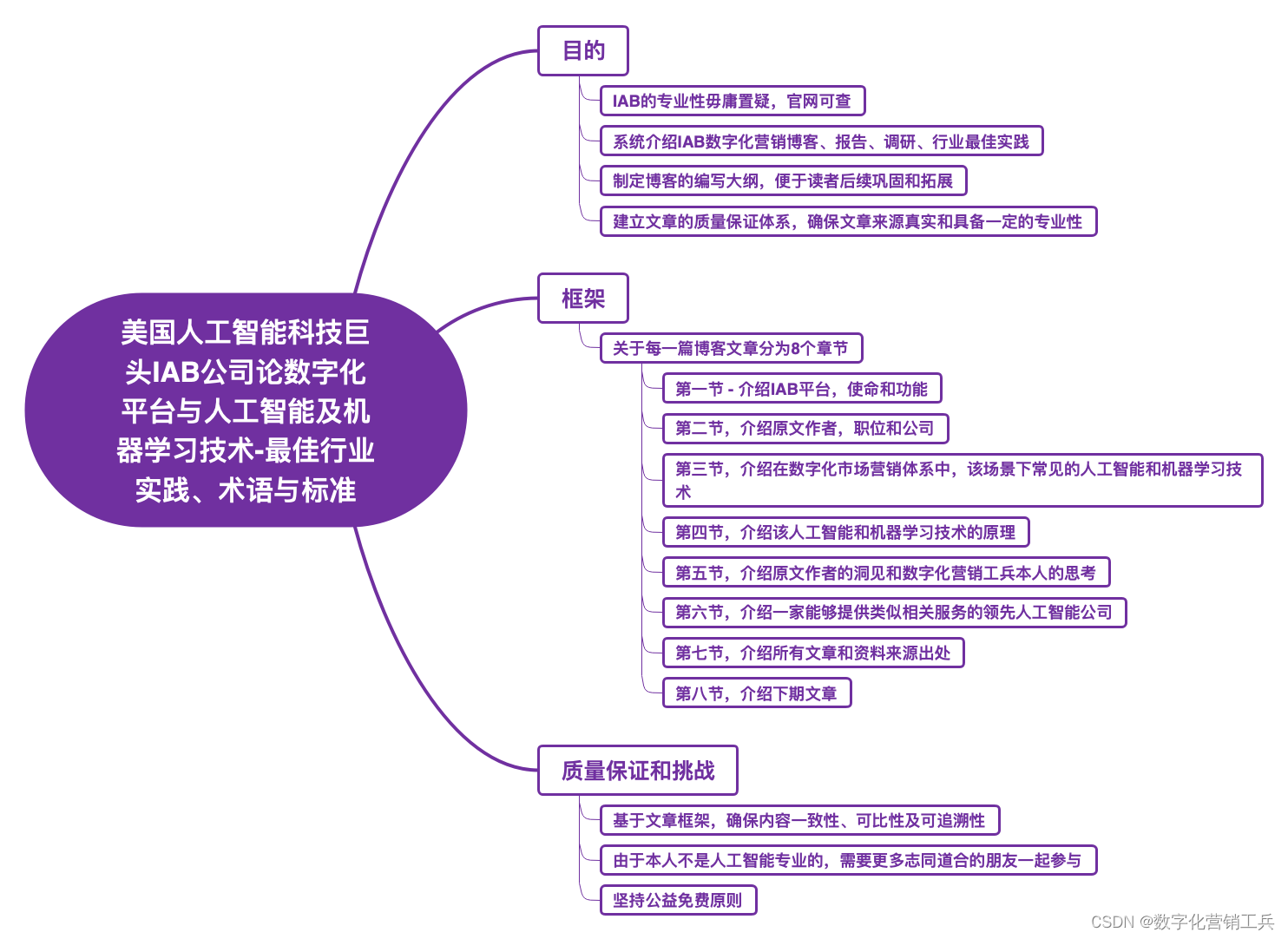
第十篇 - 如何利用人工智能技术做好营销流量整形管理?(Traffic Shaping)- 我为什么要翻译介绍美国人工智能科技巨头IAB公司
IAB平台,使命和功能 IAB成立于1996年,总部位于纽约市。 作为美国的人工智能科技巨头社会媒体和营销专业平台公司,互动广告局(IAB- the Interactive Advertising Bureau)自1996年成立以来,先…...

npm ERR! errno -13具体问题处理
npm ERR! errno -13具体问题处理 出现问题的报错 npm ERR! code EACCES npm ERR! syscall open npm ERR! path /Users/xxxx/.npm/_cache/index-v5/c6/06/xxxxx npm ERR! errno -13 npm ERR! npm ERR! Your cache folder contains root-owned files, due to a bug in npm ERR! …...

【Python】3. 基础语法(2) -- 语句篇
顺序语句 默认情况下, Python 的代码执行顺序是按照从上到下的顺序, 依次执行的. print("1") print("2") print("3")执行结果一定为 “123”, 而不会出现 “321” 或者 “132” 等. 这种按照顺序执行的代码, 我们称为 顺序语句. 这个顺序是很关…...

IPsec VPN之安全联盟
一、何为安全联盟 IPsec在两个端点建立安全通信,此时这两个端点被称为IPsec对等体。安全联盟,即SA,是指通信对等体之间对某些要素的约定,定义了两个对等体之间要用何种安全协议、IP报文的封装方式、加密和验证算法。SA是IPsec的基…...

012集——显示高考天数倒计时——vba实现
以下代码实现高考倒计时: Sub 高考倒计时() 高考日期 CDate("06,07," & Year(Date)) If Date > 高考日期 Then高考日期 CDate("06-07-" & Year(Date) 1) End If 年月日 Year(Date) & "年" & Month(Date) &am…...
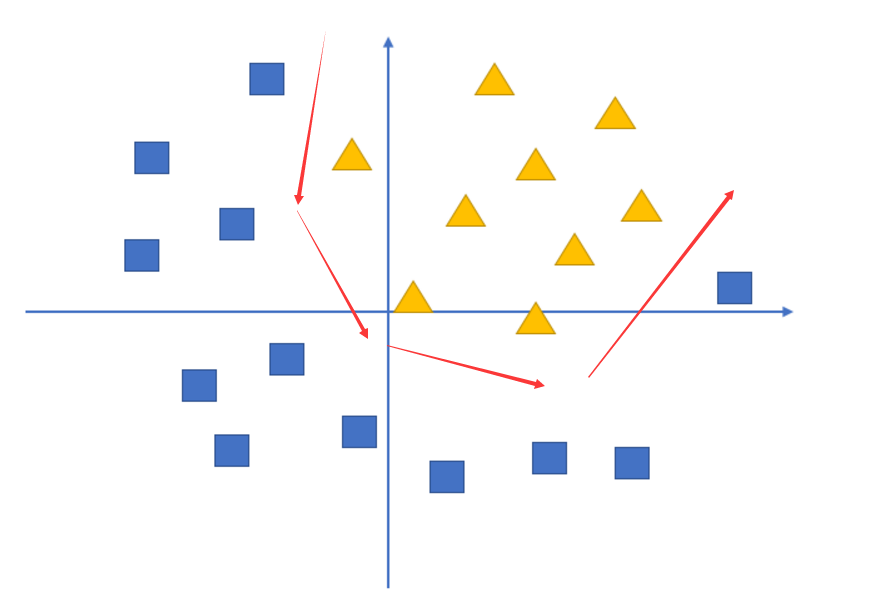
1.1 深度学习和神经网络
首先要说的是:深度学习的内容,真的不难。你要坚持下去。 神经网络 这就是一个神经网络。里面的白色圆圈就是神经元。神经元是其中最小的单位。 神经网络 单层神经网络: 感知机 (双层神经网络) 全连接层: …...

sentinel docker 基础配置学习
1:去官网下载 Releases alibaba/Sentinel GitHub 2:保存到linux 3:编写dockerfile FROM openjdk:8-jreLABEL authors"xxx" #第二步创建一个文件夹Z RUN mkdir /app #第三步复制jar 到app 下 COPY xxxxxx-1.8.7.jar /app/#第四…...

与缓存相关的状态码
与缓存相关的 HTTP 状态码主要涉及客户端和服务器之间对资源缓存的处理和验证,以下是一些常见的与缓存相关的状态码: 1. **200 OK**: - 当服务器成功处理了客户端的请求时,会返回状态码 200 OK。这意味着请求成功,…...

影刀_如何点击桌面图片上的指定区域
问题:如图,桌面上有一张打开的图片,如何点击“J&T极兔快递”的左上角和右下角? 总体流程: 1、用“影刀离线OCR”指令获取目标区域坐标值。 分别是:x1,y1,x2,y2 2、用快捷键ctrlalt键获取图片左上角的…...

linux安装部署mmdetection,亲测可行
安装了两天,最后终于成功,这里有一些注意事项,版本对应啥的: 这里是mmdetection与MMCV的版本对应关系: mmdet与mmcv的版本对应有一些包因为版本问题直接pip下载不了,这里直接跑到官网去复制下载命令&#…...

连锁超市冷库节能解决方案:如何实现超市降本增效
在连锁超市冷库运营中,高能耗、设备损耗快、人工管理低效等问题长期困扰企业。御控冷库节能解决方案通过智能控制化霜、按需化霜、实时监控、故障诊断、自动预警、远程控制开关六大核心技术,实现年省电费15%-60%,且不改动原有装备、安装快捷、…...
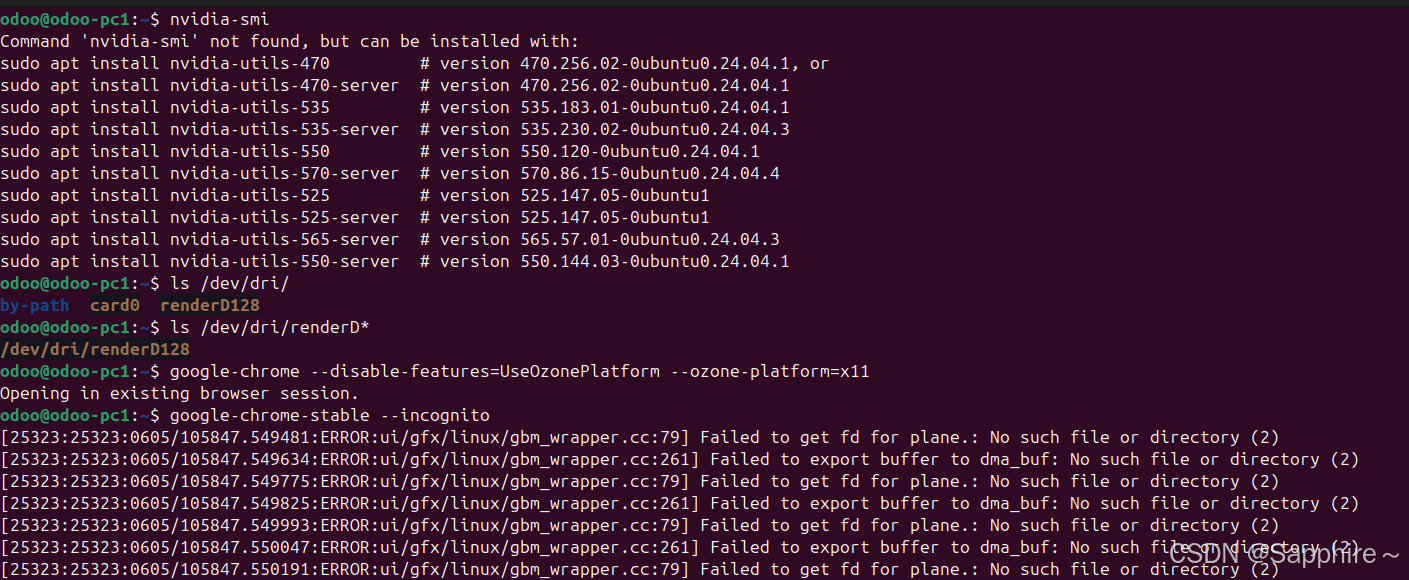
Linux-07 ubuntu 的 chrome 启动不了
文章目录 问题原因解决步骤一、卸载旧版chrome二、重新安装chorme三、启动不了,报错如下四、启动不了,解决如下 总结 问题原因 在应用中可以看到chrome,但是打不开(说明:原来的ubuntu系统出问题了,这个是备用的硬盘&a…...
的使用)
Go 并发编程基础:通道(Channel)的使用
在 Go 中,Channel 是 Goroutine 之间通信的核心机制。它提供了一个线程安全的通信方式,用于在多个 Goroutine 之间传递数据,从而实现高效的并发编程。 本章将介绍 Channel 的基本概念、用法、缓冲、关闭机制以及 select 的使用。 一、Channel…...

JS手写代码篇----使用Promise封装AJAX请求
15、使用Promise封装AJAX请求 promise就有reject和resolve了,就不必写成功和失败的回调函数了 const BASEURL ./手写ajax/test.jsonfunction promiseAjax() {return new Promise((resolve, reject) > {const xhr new XMLHttpRequest();xhr.open("get&quo…...

省略号和可变参数模板
本文主要介绍如何展开可变参数的参数包 1.C语言的va_list展开可变参数 #include <iostream> #include <cstdarg>void printNumbers(int count, ...) {// 声明va_list类型的变量va_list args;// 使用va_start将可变参数写入变量argsva_start(args, count);for (in…...

k8s从入门到放弃之HPA控制器
k8s从入门到放弃之HPA控制器 Kubernetes中的Horizontal Pod Autoscaler (HPA)控制器是一种用于自动扩展部署、副本集或复制控制器中Pod数量的机制。它可以根据观察到的CPU利用率(或其他自定义指标)来调整这些对象的规模,从而帮助应用程序在负…...
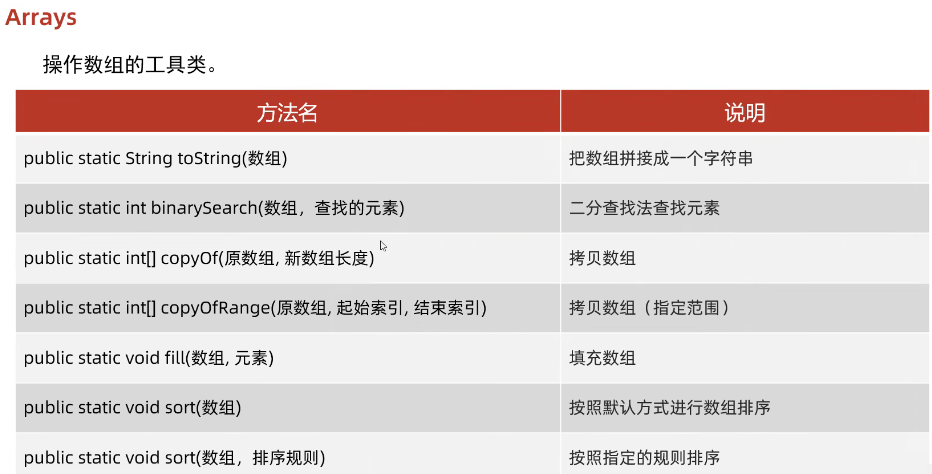
Java数组Arrays操作全攻略
Arrays类的概述 Java中的Arrays类位于java.util包中,提供了一系列静态方法用于操作数组(如排序、搜索、填充、比较等)。这些方法适用于基本类型数组和对象数组。 常用成员方法及代码示例 排序(sort) 对数组进行升序…...

FOPLP vs CoWoS
以下是 FOPLP(Fan-out panel-level packaging 扇出型面板级封装)与 CoWoS(Chip on Wafer on Substrate)两种先进封装技术的详细对比分析,涵盖技术原理、性能、成本、应用场景及市场趋势等维度: 一、技术原…...

EEG-fNIRS联合成像在跨频率耦合研究中的创新应用
摘要 神经影像技术对医学科学产生了深远的影响,推动了许多神经系统疾病研究的进展并改善了其诊断方法。在此背景下,基于神经血管耦合现象的多模态神经影像方法,通过融合各自优势来提供有关大脑皮层神经活动的互补信息。在这里,本研…...

用js实现常见排序算法
以下是几种常见排序算法的 JS实现,包括选择排序、冒泡排序、插入排序、快速排序和归并排序,以及每种算法的特点和复杂度分析 1. 选择排序(Selection Sort) 核心思想:每次从未排序部分选择最小元素,与未排…...
